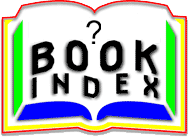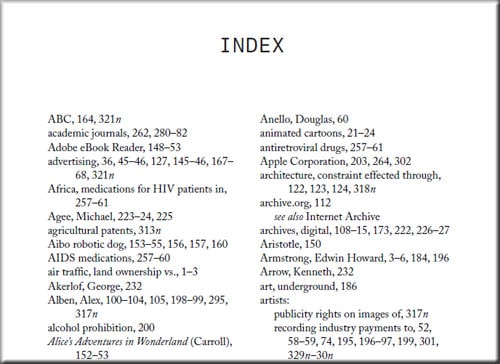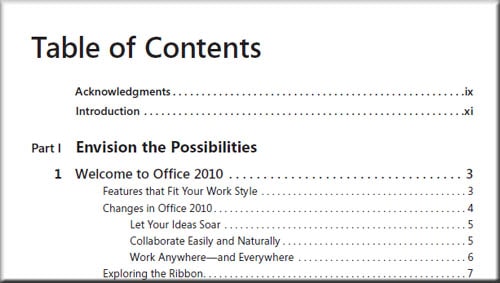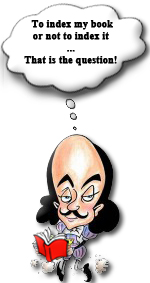
Any author who finishes writing his first book will mostly ask these questions:
- Do I really have to create an index for my book? Can’t I just skip it?
- An index is just an old fashion. Does anyone still use that?
- Isn’t there any program to create that index for me?! … We’re in the 21st century!
Well, let’s answer those questions and try to help you decide whether or not to create an index for your book.
Do I really have to create an index for my book? Can’t I just skip it?
Since you’re the author, it is up to you whether you decide to include an index for your book or not. But the reader might have another opinion. If your book is a non-fiction book then the reader will surely need an index for it, and the index should be well made. To convince you, you should know that a good index will help increase your book sales.
Let me show you a practical example…
David is a guy who wants to buy a non-fiction book that is of the same field of your book. He is not looking for a specific title but the book he wants should cover some information he needs, so he goes to a book store; the librarian directs David to the corner of books he might be interested in; David starts checking the books in that corner. Since David is a smart guy; instead of checking the contents of each book he starts checking the index of each book to save his time. He starts searching for specific terms he needs to be sure this book will answer the problems he is facing. After checking the indexes of a couple of books he finally reaches your book, opens it and he happily finds all the terms he was looking for in your book index. Now he opens the pages of some of those index terms to be certain that the information is covered in full details inside the book. His eye sparkles “That’s exactly the book I want”, said David. David happily orders your book. He is very happy with this successful purchase he made.
In short; a well done index is what sells a book. If your book does not have an Index, your book reader will be totally lost. If your book has a good index, then this increases its chances of being found easily, and orders will increase.
An index is just an old fashion. Does anyone still use that?
The index is not just used to help the reader to decide whether to order your book or not. Here are some other common cases for how the book index is used by readers daily:
- David has read your book 2 years ago. Today he wants to look for a topic he remembers that he has read in your book. He can easily find it through the book index if the index was well made by checking one or two terms concerning this topic. That saves him a lot of time.
- Janet is a researcher. She is in the library looking for books with specific topics that could help her complete her research. Your book index was so helpful for her. When she opened the book index she found a topic she was looking for, and since you were using cross-references in your book index. The topic she found has referred her to other helpful topics also in the book. She was very happy with that good index.
- Ashley is a historian. She was looking for books talking about some famous people in history. She has a list of those names she is looking for, but of course she doesn’t have time to read all historical books from cover to cover to find those names. She starts checking the index of each historical book that she has, trying to find those names out there. Luckily your book index is professionally made, and you have added all the names in your book in its index in a nice reversed way like “Lincoln, Abraham”. Ashley was able to easily look for all her names in your book index in 2 minutes with the help of your well organized index.
Those were 3 random scenarios just to show you how every reader has his own case and reason for using your book index. All your book readers will use your book index, today or tomorrow. Be assured of that.
Isn’t there any program to create that index for me?! … We’re in the 21st century!
You’re right. We’re in the 21st century 🙂 … You wrote your book, you’re the best one who knows its most important terms and topics, and you’re the best one to create its index if you just have the suitable tool to help you do so.
You can use the indexing program PDF Index Generator to help you create your book index. No program will ever replace the human mind and do the entire index without any effort from you, but PDF Index Generator reduces and organizes your book indexing work so you can do it yourself in the shortest time required.
All you have to do is read your book. Consider it as a fast review for your book. While reviewing it collect the most important terms inside your book in a text file, each entry in a separate line. This step will be the most effort you make. After finishing this step you will run the program, copy and paste the collected list to it, and let the program do the magic. It will generate the index, grabbing the pages numbers of each of your collected terms, and then you can write the index to your book. If you need more sophisticated index like defining cross-references, headers& sub-headers, changing the fonts and colors of the index, etc. All this is available through the program advanced options.
And finally you will get a nice stylish index suitable for your book and totally professional for your different book readers. Here are some index samples created using the PDF Index Generator program:
I just hope I have thrown light on the index issue and clarified it for you. Now the decision is yours whether to index your book or not. The decision is now yours 😉
Congratulations!
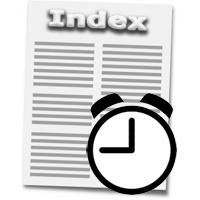



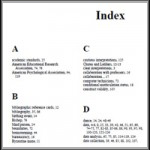 Most books write 2 columns per page in the index section. This is the best option for a good readable index, especially if some index entries are long, but if most of your index entries have 2 or 3 words only then you can write 3 columns per page. That will save a lot of space, and you can have more index entries that way because you are having an extra column of index entries per each page. But still; 2 columns is a better option.
Most books write 2 columns per page in the index section. This is the best option for a good readable index, especially if some index entries are long, but if most of your index entries have 2 or 3 words only then you can write 3 columns per page. That will save a lot of space, and you can have more index entries that way because you are having an extra column of index entries per each page. But still; 2 columns is a better option.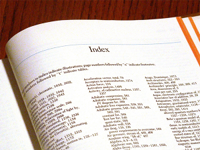
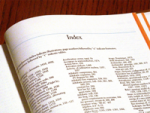
 reviewers who had already bought your book and read it, to easily find and review something they have already read before.
reviewers who had already bought your book and read it, to easily find and review something they have already read before.